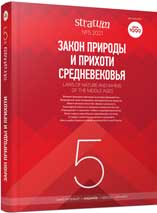Зооморфные элементы в керамике Самосдельского городища
Zoomorphic Elements in Ceramics of the Samosdelsky Settlement
Author(s): Emma D. Zilivinskaya, Dmitry V. Vasiliev, Ekaterina M. BoldyrevaSubject(s): History, Archaeology, Middle Ages, 6th to 12th Centuries, 13th to 14th Centuries
Published by: Издательский дом Stratum, Университет «Высшая антропологическая школа»
Keywords: Lower Volga region; Middle Ages; Khazar Kaganate; glazed ceramics; non-glazed ceramics; zoomorphic elements; moldings; drawings; rhyton; Central Asia;North Caucasus;
Summary/Abstract: Samosdelskoe settlement, located in the lower reaches of the Volga, arose in the Khazar times and existed continuously until the Golden Horde era. Excavations yielded the richest ceramic material. A representative group of ceramics with zoomorphic moldings in the form of ram horns, “eyes”, “ears”, “muzzles” of various animals, as well as handles in the form of figurines of horses and rooster heads stands out. An expressive hand-made lid, which depicts two pairs of fantastic animals arranged in a circle. A ceramic rhyton is a unique find. Drawings of birds, fish and hares are found on glazed ceramics. An analysis of all images indicates a close connection of the settlement with Central Asia, the North Caucasus, Transcaucasia, Volga Bulgaria and the Don region of Khazaria.
Journal: Stratum plus. Археология и культурная антропология
- Issue Year: 2021
- Issue No: 5
- Page Range: 167-185
- Page Count: 19
- Language: Russian
- Content File-PDF

